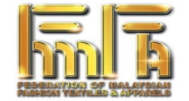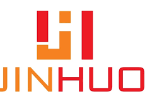This site
is mobile
responsive
Textile and Apparels
The Malaysian textile manufacturing market is projected to expand from USD 3.49 billion in 2025 to USD 4.47 billion by 2030, reflecting a compound annual growth rate (CAGR) of 5.1%. This growth is attributed to the robust domestic textile and apparel industry, increasing disposable income, and changing fashion trends.
To stay competitive, Malaysian textile manufacturers are increasingly investing in automation and digitalization in their manufacturing facilities. The use of automation and digitalization in the textile industry has improved efficiency and precision while also paving the way for innovative advancements. Automation, robotics and software have been utilized to streamline processes, reduce waste, and enhance the overall quality of textile products. Overall, the adoption of automation and digitalization continues to redefine the manufacturing processes and set new standards for efficiency and innovation in the textile industry.
Textiles

Spinning

Weaving

Knitting
Apparels
Clothing
which includes made-up garments, Personal Protective Equipment (PPE) and accessories (labels, buttons, zippers, packaging, etc.)
Footwear
which includes boots, shoes, sandals, slippers and clogs

Leather
which is used to make a variety of articles/accessories including footwear, automobile seats, clothing, bags, book bindings, fashion accessories and furniture

Jewellery
which includes decorative items worn for personal adornment made up of jewellery or precious metals, and costume jewellery such as brooches, rings, necklaces, earrings, pendants, bracelets and cufflinks.

Federation of Malaysian Fashion,
Textile & Apparel Industrial

Ramatex Textiles
Industrial Sdn. Bhd

Recron Malaysia Sdn Bhd

Jin Huo Gold & Jewellery
Industries (Malaysia) Sdn Bhd

Habib Jewels Sdn. Bhd.

Bonia Corporation Berhad

Fibertex Nonwovens Sdn Bhd

Penfabric Sdn Bhd
![]()
Bata (Malaysia) Sdn Bhd
The Federation of Malaysian Fashion, Textiles and Apparels (FMFTA) was launched in collaboration with MIDA in 2019, in line with Malaysia’s initiative to accelerate the adoption of Industry 4.0.
The federation was established as a response to the advent of technologies such as the Internet of Things (IoT), Artificial Intelligence (AI), digital printing, cloud computing and system integration that have impacted both the front end as well as the back end of the textiles and apparels industry.
The FMFTA has the following objectives:
Leather Products
The global leather goods market is projected to grow from USD 317.91 billion in 2025 to USD 392.39 billion by 2030, reflecting a compound annual growth rate (CAGR) of 4.30% during this period.
In Malaysia, the luxury leather goods market is expected to generate US$733.19 million in revenue by 2025, with an anticipated annual growth rate of 2.89% from 2025 to 2029.
Leather making in Malaysia combines traditional craftsmanship with modern techniques. The sector processes leather through advanced tanning methods to produce a diverse range of high-quality products, including shoes, bags, and belts. Malaysia mainly imports its leather from Indonesia, India, Pakistan, and Vietnam.
With a growing emphasis on sustainability, the leather industry in Malaysia is currently focusing on eco-friendly practices and innovative technologies to reduce environmental impact and meet global market demands.
Gold Jewellery
According to Euromonitor International, Malaysia’s jewellery market is set to grow annually by 3.73% (CAGR 2023-2026), reaching a market value of USD1.87 billion by 2026. This growth can be attributed to factors, such as the rising disposable income and purchasing power of the middle class have fuelled the demand for jewellery.
Malaysia is home to some of the world’s finest gemstones, including ruby, blue sapphire, emerald, pearls, and jade. Boasting over 100 manufacturers, the industry thrives on craftsmanship and expertise in the gold jewellery production. Penang stands as the nation’s leading jewellery hub, producing over 70% of Malaysia’s high-quality gold jewellery. With a highly skilled workforce and a well-established manufacturing ecosystem, the industry continues to enhance its economic value and strengthen its position in the global market.